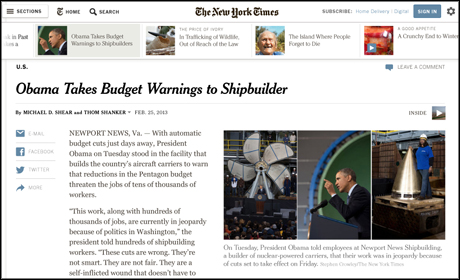
The New York Times has today launched a prototype version of NYTimes.com as the site undergoes major changes to begin later in the year.
Users selected at random from outside the Times will be able to access the site to provide feedback while Times employees have access from within the company firewall to "experiment", according to a release.
"They can navigate through and experience the article pages completely in this format until they opt to change back," manager of corporate communications at the New York Times Linda Zebian told Journalism.co.uk. "So they can always change back to the original version if they wanted to."
Developers plan to enhance the site with a new design involving better incorporation of media, customisable navigation for registered users and improved integration of comments and share tools. The public can preview the site through an animated tour.
"We haven't done a major site redesign since 1996 so we want to enhance the site, we want to improve the overall experience for readers and advertisers," Zebain added.
"We just want it to be a richer digital platform."
In terms of the presentation, Zebian pointed to the recent 'Snow Fall' interactive on the New York Times website as a point of reference for how the new website will look.
"It's a cleaner design, it integrates the photography and the multimedia within the story, so it just tells the story more richly."
Users can request an invitation to test the prototype, subject to availability, and the new features will go live later in the year.

The redesigned site on iPad
Free daily newsletter
If you like our news and feature articles, you can sign up to receive our free daily (Mon-Fri) email newsletter (mobile friendly).
Related articles
- Axel Springer CEO on OpenAI deal: 'We must protect intellectual property of news content'
- Audiences, AI and audio apps: five talking points from Perugia
- From Reuters to The New York Times, Big Oil pays 'most trusted media brands' to push greenwashing
- News subscriptions hit a snag amid cost-of-living crisis, RISJ report finds
- Four digital media trends to watch: generative AI, Gen Z, business models and news formats









